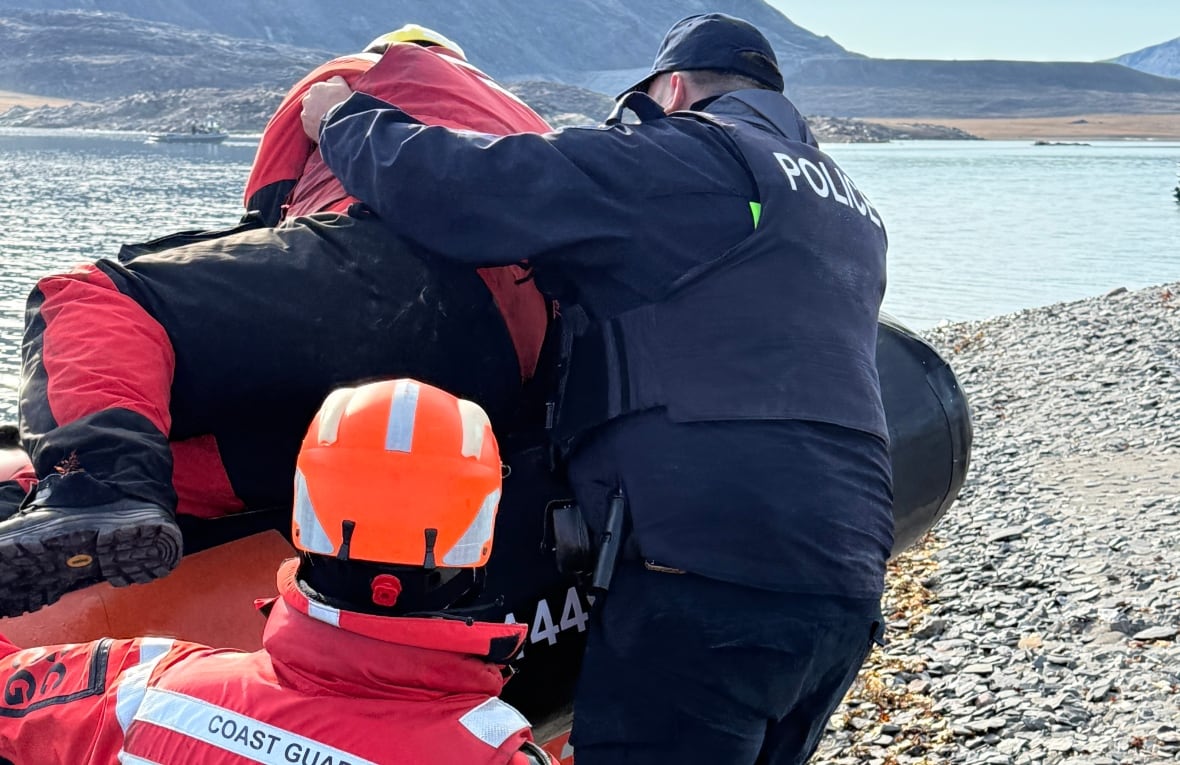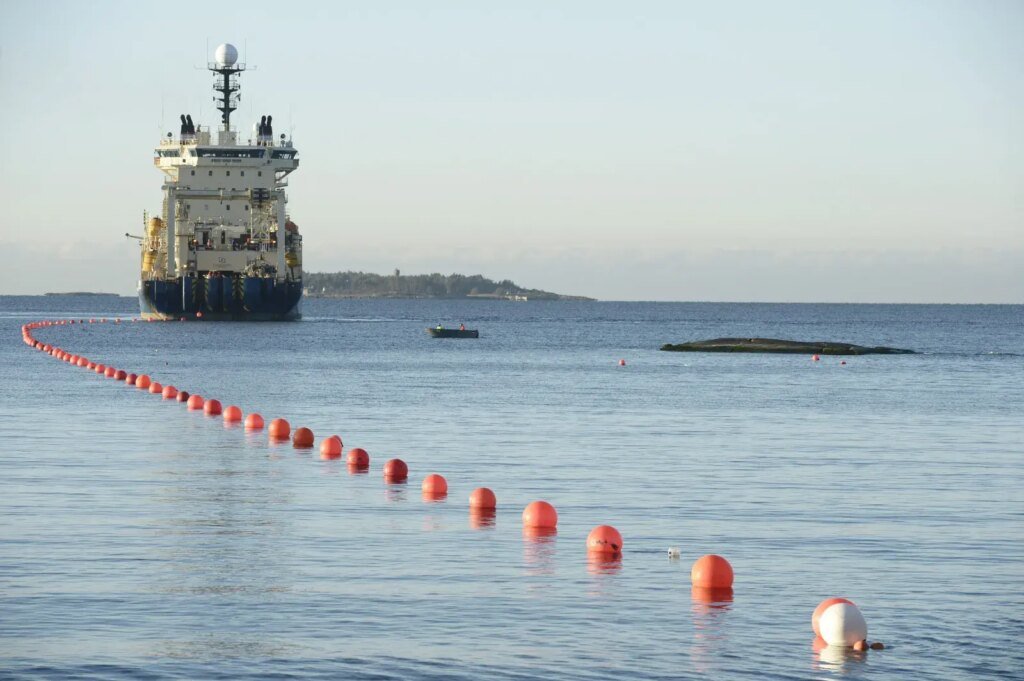More than 3,000 kilometres north of the nation’s capital, soldiers, ships and aircraft of Canada’s Armed Forces gathered this week in one of the most remote areas of the country to answer one question: How would they board a foreign vessel that neither wanted to be seen, nor stopped.
What if the crew of that ship was near sensitive military sites in the North?
It may seem far-fetched. But vessels run routinely through the north with their transponders switched off — largely invisible to other ships, and not necessarily seen by Canada’s satellite and surveillance systems.
The annual exercise is known as Operation Nanook, and took on particular significance this year with a collision of geopolitical changes: China’s growing ambition in the Arctic, Prime Minister Mark Carney’s plans to substantially increase the capabilities of the military and the newly recognized value of minerals in the North.
CBC News had exclusive access to the military and coast guard exercise, just as Canada’s traditional adversaries have shown growing interest in the North’s rich deposits of critical minerals. Not to mention the opening of new, shorter shipping routes between Asia, North America and Europe through the Northwest Passage as climate change makes for an increasing number of ice-free days.
“That would be Russia and, increasingly, China,” said Stephanie Carvin, a former national security official and now an academic with Carleton University in Ottawa.
“[China] has an ambitious plan to basically control a lot of the rare-earth elements and mining and wants to invest in the Canadian Arctic.”
Those elements and some of the world’s richest deposits of critical minerals — copper, nickel, lithium, graphite and cobalt — are found in the North.
Chinese vessels tailed by navy
China’s interest in the Arctic has been closely monitored by Canada’s military and coast guard.
Earlier this summer, the air force kept watch over a Chinese research vessel as it returned to Arctic waters for the second year in a row.
Data compiled by an independent researcher and ship tracker, Steffan Watkins, shows a Canadian CP-140 surveillance plane was flying in the vicinity of the Xue Long (Snow Dragon) 2 as it exited the Bering Strait.
But it was an icebreaker, the CCGS Sir Wilfred Laurier, “which unmistakably paralleled” its path from Japan to Alaska, Watkins wrote online.
In 2024, the frigate HMCS Regina deployed on short notice to follow the same vessel in international waters. The Chinese ship is considered dual purpose, meaning the data it gathers above and underwater could be used for research or military ends.
That vessel’s predecessor transited Canada’s Northwest Passage in 1999, sending alarm bells through national security officials.
“They’re not warships per se, but they are capable of taking all sorts of… information that of course then can ultimately be utilized by warships in the future,” said Rob Huebert at the Centre for Military and Strategic Studies at the University of Calgary.
He says China may now have maps allowing its submarines to run through Canadian waters.
Both China and Russia are known to use “shadow” or “ghost” vessels, which appear to be merchant or other inoffensive vessels, but are actually used for espionage or other nefarious activities.
The geopolitics of the North have changed.
“There’s really been a renewed interest in the Arctic, not only for its abundance of resources, but the incredible people that call this place home.”, said P.J. Akeeagok, the outgoing premier of Nunavut.
He’s made his case to the prime minister, arguing that ensuring the residents of the North have economic prospects and basic needs met is key to having healthy communities, which itself is necessary to asserting sovereignty over the region.
“You have to really go right to the importance of investing in the backbones of our communities, whether it’s hydropower or whether it is [enough] homes for people.”
The federal government has just this week identified an Arctic economic and security corridor on a long list of projects of national significance, which could ultimately see a significant funding commitment and the streamlining of regulatory approvals.
In the military exercise this week, a coast guard helicopter and HMCS William Hall, the newest of the navy’s recently launched Arctic and off-shore patrol vessels, were able to pinpoint a suspect vessel’s location in a cove within just a couple of hours.
Since this is an exercise in domestic waters, the navy can interdict the vessel but police need to be involved in any law enforcement activity. As a result, RCMP officers on board the navy ship are sent onto a rocky remote beach popular with seals in the Arctic’s sunnier months.
CBC News watched as the Mounties approached in a coast guard fast boat and apprehended two individuals playing the part of suspicious interlopers.
Together, they were found to have a handgun and Russian military intelligence identification. None of it was real, but that the military created such a scenario is telling of the real-world threat for which they’re preparing.
“The first step is to observe… with the new technology that we have,” said Brig.-Gen. Dan Riviere, the commander of Joint Task Force-North, the unit charged with defending the Arctic.
Riviere says he is confident no vessel could enter Canadian waters without the government knowing. But the area is so vast, getting to it is the bigger challenge.
“It’s 40 per cent of the country’s landmass,” he said, adding it takes air support, ships, planes, people and other resources “to do anything here.”

Canada’s raft of recent defence purchases will certainly change the dynamic.
The backbone of maritime surveillance are the CP-140s, some of which date from the 1980s. They are set to be replaced by the P-8 Orion — which is larger, with a significantly more sophisticated surveillance system, allowing the air force to see in greater detail over longer distances.
Canada has also partnered with Australia to develop a new Arctic over-the-horizon radar system, replacing the Cold War-era system used to detect missile and maritime threats.







